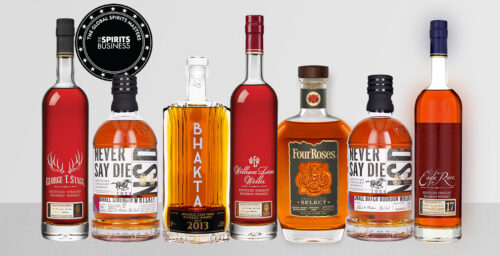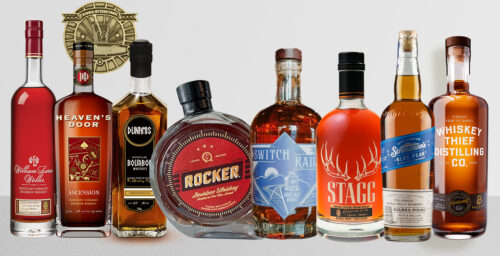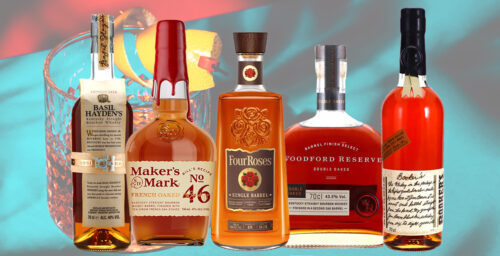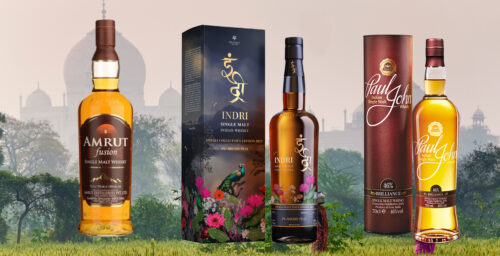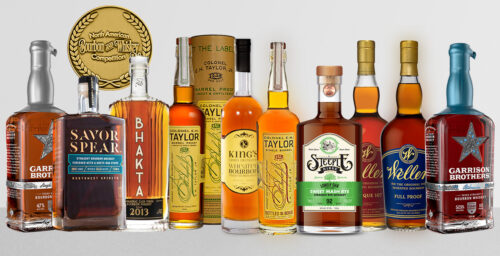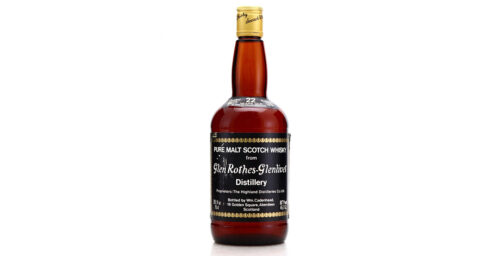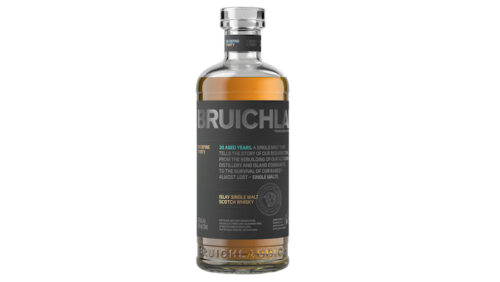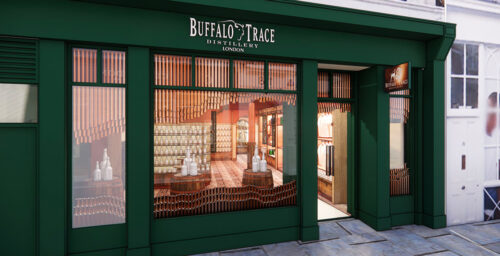In their work producing a range of spirits, including whiskey, the distillers at Spirits of French Lick in West Baden, Indiana are both traditionalists, and people willing to try a twist on tradition. We had a conversation with Alan Bishop, head distiller at the company, on his initiation into country moonshining, the history of Indiana distilling, devising heirloom corn varieties, collecting vintage yeasts from distilleries long gone, the curves of a pot still and the processes behind what makes their whiskeys worth the trouble.
The Whiskey Wash: What brought you to distilling?
Alan Bishop: I grew up in a family of distillers. Some of them legal, most of them illicit, Indiana and Kentucky both. We were sort of born into vice, so we raised tobacco and made moonshine to pay property taxes. I remember being around stills when I was four years old and there was no romanticism to it. It was like another piece of farm equipment. Moonshining was one more thing that we had to do to buy Christmas presents or pay property taxes or any of those things.
I either had the best parents in the world or the worst parents in the world, but their rules were basically you’re going to find things in life, and if you’re going to find those things, we’d rather you find them at home where you can be monitored. About 15, I got tangentially interested in distilling and my grandpa and my dad helped me build a little ten-gallon still and they gave me two rules: Don’t blow yourself up in the backyard and bring us something that’s worth drinking.
One of the things that worked was what is now the Lee Sinclair mash bill. I came up with that when I was 15 or 16, and at that time it was a sugar shine. Later it got converted over to a grain bourbon.
By the time I was in my mid-20s, I got back into farming and got really interested in plant breeding and organic systems and things of that nature. At that time in the Ohio Valley, pretty much everybody and their brother had a garden so it was impossible to sell anything, and the things I was growing were weird and off the wall and things that people hadn’t really seen.
So if you can’t find a market for it, you say ‘let’s run it through a still and see what it does’ and that led to a much larger still and eventually led to my now wife saying, ‘All right, you guys are going to have to go find a job doing this legally or I’m gone.’

TWW: So did you research Indiana distilling history, or did you already know it from being born into it?
AB: I knew some of the moonshining history because, obviously, being around it. But the deeper legal Indiana history, that I’ve done a lot of research on over the years and dug up a lot of the old history on the commercial distilleries that were here in Southern Indiana, and that has very much informed my work experience at French Lick. At one point in the 1800s, from about 1855 up to 1914, Indiana was basically the apple brandy capital of the world. In the six-county “Black Forest” region of Southern Indiana, there were 155 commercial distilleries there making apple brandy and what we would now recognize as wheated bourbon.
What we do at Spirits of French Lick is staying true to the vein of that Black Forest cultural distilling methodology. Being right now the only real operational commercial distillery in that six-county region, it was important to me with starting at a small distillery that we didn’t want to mimic what’s happening in Kentucky.
TWW: Did you have a hand in working with the different strains of heirloom corn grown on the company farm and used in some of the whiskeys, like the Amanda Palmer strain?
AB: Yeah, that was me in my mid-20s playing around with plant breeding. That didn’t start out as a distilling corn. It got there eventually by necessity. It started out as a grain corn to feed animals and also to make cornbread and grits out of. Of course, any corn that you can make cornbread and grits out of, you can make damn good whiskey out of. We were trying to take those different corns with genetics that aren’t commonly available in modern corns and cross those back into what they call the old southern dent corns, which are basically what the modern yellow hybrids are now, in order to explore flavor and agronomics for organic production.
We figured out pretty quickly that those different colors of corn are different amino acids that are water-soluble or fat-soluble and then with pot still distillation, they carry unique flavors across into the distillates. We grow between 15–30 acres of it every year to use what we’re currently calling our heirloom corn bourbon. The mash bill is the most basic mash bill that we have. It’s 80 corn, 10 rye, and 10 malt, and the purpose of that is just to really focus on what that corn flavor brings to the table.
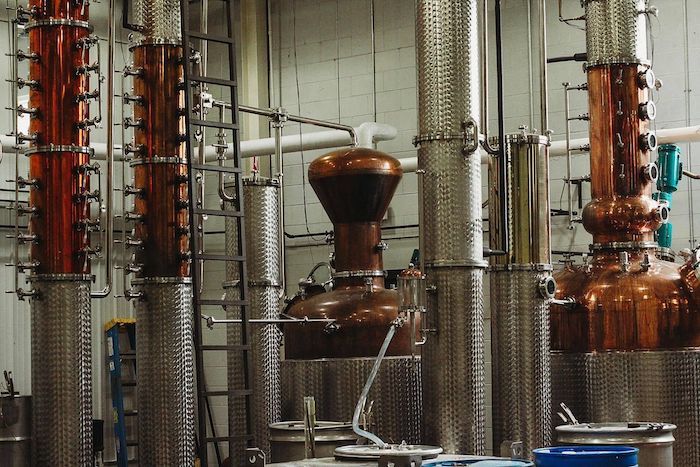
TWW: Do you do all your own milling?
AB: That’s a huge part of what we do, especially qualitatively. There are a couple of issues: the first issue is that if you’re not grinding your corn or all your grain fresh every day, you’re really giving that grain a chance to oxidize.
Grain is just like an apple. The minute it gets crushed, it starts to oxidize and it’ll lose quality. So if you’re having it pre-ground and you’re using it over a period of time, it’s going to lose quality every single day.
The other rationale behind that is that you’d better really trust your miller if you’re buying your grain already milled because you’re taking his word. Unless you’re standing right there, you’re taking his word for what’s going in that bag, both quality and variety wise. So for us, it’s important to be involved hands-on from start to finish on a daily basis. So every single time we make a batch, it’s all fresh-ground grain.
TWW: What are your reasons for using oats in the whiskeys?
AB: Oats were almost always a part of illicit Irish distilling and sometimes illicit Scottish distilling. There was a time between the 1840s and 1870s that oats would’ve been very common in bourbon mash bills amongst smaller distillers. You figure out really quickly, qualitatively, that oats have a lot of long-chain fatty acids to them, so they soften the whiskey a lot. They provide a really nice mouth feel to it.
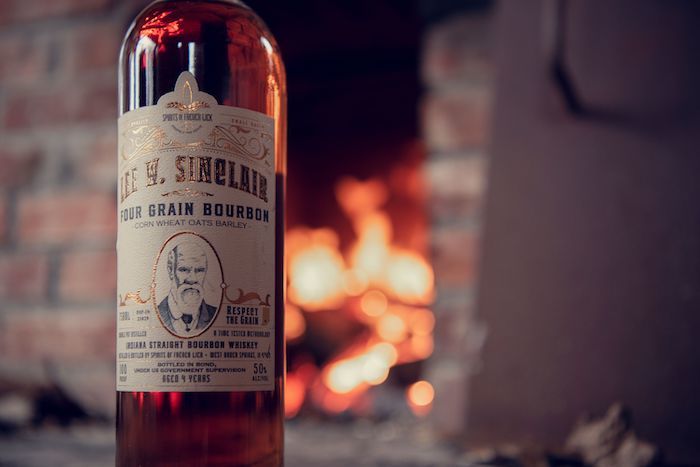
TWW: You guys use at least a couple of different yeast strains for the different individual whiskies rather than a single yeast. What difference does that make for you?
AB: You talk to a Kentucky bourbon distiller and they’re going to tell you 60–70% of their flavor profile is going to come from the barrel. A lot of the authors there in particular will talk about yeast only contributing maybe 5–10% of the flavor. But it’s been our experience already that even in a mature four-year-old product, the yeast is probably contributing as much as 20% of the flavor because it’s creating those unique long-chain fatty acids. On all of our mainline products, we use two different yeast strains. The first strain is essentially a house strain that we captured from the distillery.
So it’s adapted to the distillery specifically and we’ll make a mash for 600 gallons using that strain. The next day we’ll make another mash that gets blended with the first one of 600 gallons using one of three different brandy yeasts and those brandy yeasts really pull out the fruity flavor profiles that the grain can provide.
But the other thing we do is we capture a lot of the yeast. Part of the living history that still survives from those old Indiana distilleries is that of the 155 that were here, there are basically three buildings left. There’s an old Krogman machine room, which really doesn’t hold that much interest to us. There’s the Daisy Spring distillery, which is now Spring Mill State Park, which is probably the most intact early distillery in the state, and then there’s the McCoy Distillery, which is now a residential garage.
We’ve gathered yeast from the Spring Mill site. They have the old hogsheads that they used to mash into there and we were able to get active yeast from that, which has like a Cinnamon Toast Crunch sort of aroma to it. We’ve been able to get yeast from the McCoy Distillery, which is of all the yeast that we propagate, probably a little more like most of the Kentucky bourbon yeasts that are used. We have a yeast that we think is probably from the Old Clifty Distillery, which we named our apple brandy after. We most recently gathered one from a lagering cave underneath St. Louis from Earthbound Brewing, where we are trying to capture some of that old St. Louis brewing terroir to use in a new product.
TWW: What is the significance of the company using pot stills for distillation?
AB: I can tell you that if they hadn’t planned on using pot stills, I wouldn’t have taken the job. I’m a huge proponent of pot stills and all the various modifications that can be made to them. Nothing wrong with Kentucky column stills, but if I were just watching gauges all day and marking something on a clipboard, I’d get bored pretty quickly. I can tell you that the little 350-gallon pot still that I have at work that we call Sofia is honest-to-goodness the best still I’ve ever run as far as ease of use and doing what I want it to do.
Bourbon was born of pot stills. What pot stills give is this bigger, heavier, oilier spirit that has some real feistiness to it but has a little more depth, a lot more fatty acids. What we’re really in the business of doing is creating and maintaining flavor over time and you do that by breaking down long-chain fatty acids. So during the distillation process, that’s all about time spent under heat. So if you’re going into a column still, your mash might be in contact with heat for maybe two minutes. You go into a pot still, if I’m running my 1200-gallon pot still, my mash is in contact with heat for 8–12 hours.
With pot stills, you can be a little more selective with the cuts that you’re making. You can be more selective with the heads you keep or toss and the tails you keep or toss and really pull some intricate and interesting flavors out. With pot-still distilled spirits, you really need to pour that glass and let it sit for about 10 minutes, 15 minutes. Let it open up and change because there’s so much volatility captured there and so many more compounds captured there.
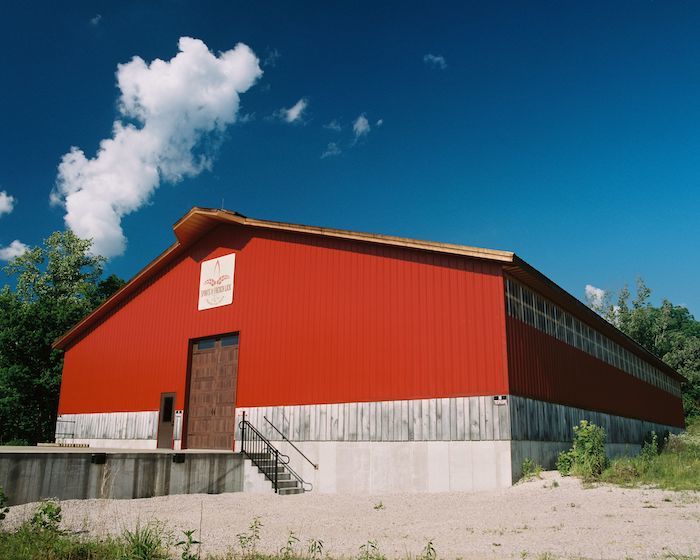
TWW: You guys barrel at a lower char level than many distillers and you also toast the staves and the barrel heads first. Why?
AB: Everything we make is pure pot-still liquor. We go into a number-two charred barrel for a couple of reasons. The first scientific reason is that we’re running pot stills. So again, we’re able to better control the cuts off of the still as far as heads and tails. So we don’t have as many impurities a lot of times, as much acetaldehyde, ethyl acetate as a lot of the big distilleries do. The char level is there as a filtration device as the whiskey heats up and cools down and moves in and out of the barrel. It’s pulling some of those impurities out. The flavor that you’re actually getting from the barrel is coming from the toast that’s underneath that char. That’s where you get those sugars from, those wood sugars.
Any part of the barrel that’s charred, there’s no sugar left there. It’s all been just burnt away and carbonized. So it’s really that toast underneath that gives you the flavor and it’s the same thing for the heads. We do a number-two char because we don’t need that heavy filtration. We want underneath that char for there to be a good toast level with plenty of wood sugar and we want those heads to also represent that wood sugar for us to get that balance out of it.
We have two distinct warehouses. There’s what we call the chai cellar, which is a lot like a brandy cellar. It’s built into the distillery itself although it doesn’t have any active heating or cooling. It basically works on the passive temperatures of the distillery itself. We get 30–40 degree differentials in that room throughout the year. It never stops aging because it never gets too cold to continue to age in there. It’s really good for those products that are more volatile.
The other thing that we get is very high humidity. We actually lose about 7% a year, but what that does is it gives us a lot of retention and concentration and it’s how we were able to put out even a two-year-old version of Lee Sinclair and then a four-year-old version of Lee Sinclair. Because we really get a lot more of those unique profiles and the maturation that we want out of the product without losing those grain profiles.
TWW: Can you tell me about any experiments you guys are doing whiskey-wise that are challenging or interesting or exciting?
AB: We’re getting ready to drop a distillery tasting-room-only product that will be called Lee Sinclair Iconoclast and we’ll do this with all the whiskeys that we have eventually. That will be a three-barrel dump of barrels that are off-profile for normal Lee Sinclair and then we’ll leave it at cask strength. The other thing that we do is if we’re making 30–40 batches of any one bourbon at a time, we take the last two or three runs. We leave everything the same but we switch out the yeasts to one of those historic yeast strains.
We’ve got a buckwheat bourbon that’ll be coming out this year which is pretty interesting and that’ll be bottled in bond as well. We’re getting ready to put out our wheated bourbon, 100% ours this time. No blended stuff in there whatsoever. That’ll be bottled in bond and then this fall we’ll have a bottled-in-bond five-year-old rye whiskey So we did Lee Sinclair and we’re going to do his daughter as the next thing. That’s called Lilian Sinclair and it’s basically an inverted version of the Lee Sinclair mash bill. We switched out the wheat for rye and the caramel malt for honey malt and we use that St. Louis yeast strain to ferment it with. It’s a few years out, but I’m super excited about the way that it came off the still.
TWW: How has the virus affected your operations?
AB: The biggest thing that’s changed is we’re not doing tours right now. Now when people pick single barrels, we’ll send them five samples of whatever whiskey or bourbon they want to look at, and we do all these virtual tastings, and a lot of podcasts and interviews. This is an opportunity and the opportunity is through social media. We uniquely were already building our brand prior to COVID on social media and this COVID thing has made that the acceptable form to drive bottle sales. I’ll be honest with you, had COVID not hit, I don’t think we’d be where we’re at.
Spirits of French Lick’s current offerings include five bourbons (one a white dog), a rum, two brandies, a vodka, an aquavit, a gin, an eau-de-vie and an absinthe. You can find out more information at https://www.spiritsoffrenchlick.com.

